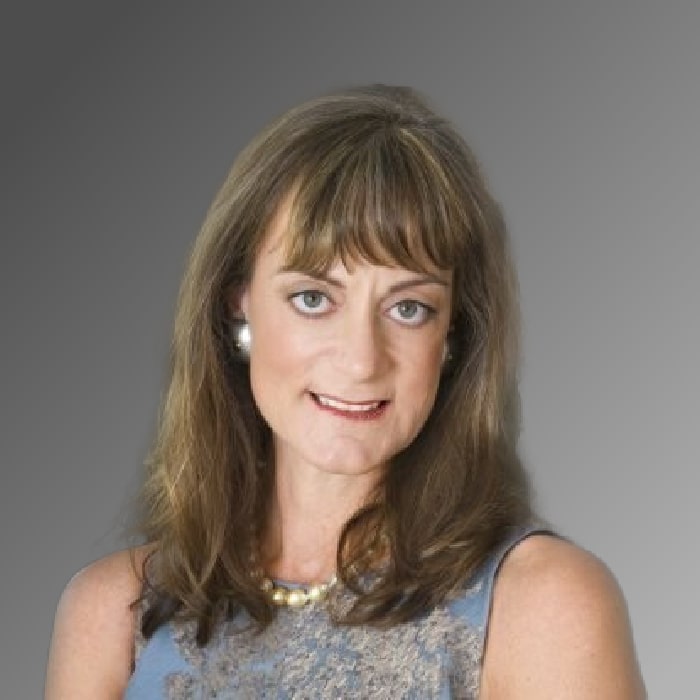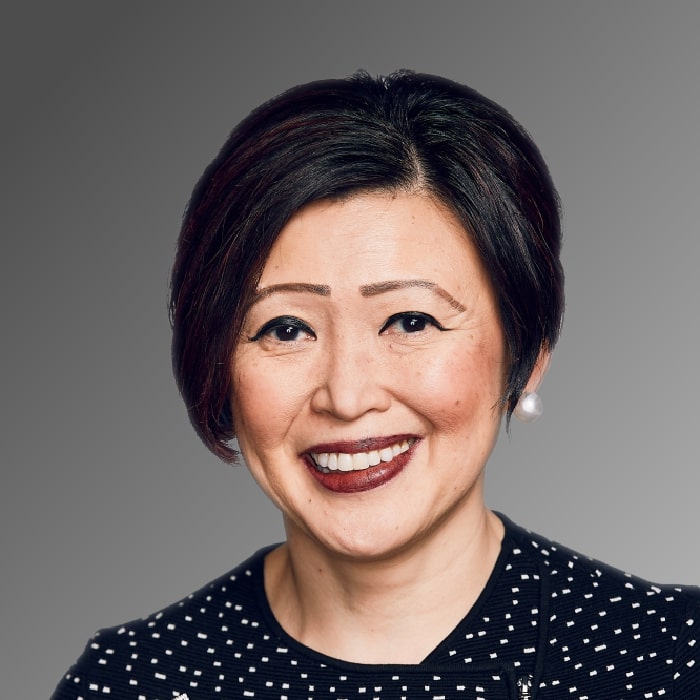Driving Cleantech Innovations with DBL Partners
May 15, 2024
Interviewed by Nicolas Sauvage on July 21, 2022
Like many future titans of the corporate venture capital realm, Nancy Pfund “didn’t even know what venture capital was when I was in college,” she told the Corporate Venture Capitalist audience and host, TDK Ventures President Nicolas Sauvage. “So it wasn’t like I spent my teenage and early adult years dreaming of being a venture capitalist.”
Early Career
Unlike most of her peers who wound up leading top CVC firms, however, the future Double Bottom Line Venture Capital (DBL Partners) Founder and Managing Partner’s undergraduate work centered on neither finance nor the hard sciences. She studied anthropology.
“Of course, my parents were like, ‘How are you going to get a job in that?’,” But I continue to believe that it is really good training for what we do because (understanding human behavior answers questions like) How do you get consensus? How do you bring people into a cultural fit? How do you exist outside of the norms, and what are the consequences? All of that is fodder for what we go through every day.
When most people think of anthropologists, they conjure Margaret Mead’s studies of Oceanic tribes. However, human behavior influences many aspects of finance and investing, including the conflict between the public and scientific experts in developing technology and public policy, which was the topic of her master’s thesis at Stanford.
That focus served her well in her position studying the public’s role in healthcare decisions and outcomes at her alma mater’s medical school. She also worked at the Sierra Club, which reinforced her sense of environmental justice, “but I knew that innovation lived in a lot of corporate R&D. And innovation was a fuel for entrepreneurship.”
That realization presented Nancy with a challenge: Pursue a Ph.D. and become an anthropology professor or take a more hands-on approach. She chose the latter, enrolling in the Yale School of Management, which prepared her by “blending the traditional business school curriculum with a broader societal lens.”
She returned to California during the recession of the late 1970s to work in Gov. Jerry Brown’s Office of Appropriate Technology. Brown’s successor abolished the office, and Nancy landed a position in new product sales at an up-and-coming computer hardware company called Intel.
“They were just beginning to realize that Intel was going to be of use to everybody, and they had to communicate that utility to non-engineers,” Nancy said. “And so me being the token anthro major at Intel, I was able to help them make that transition.”
She said she loved her time at Intel, especially working with co-founder Bob Noyce, but the newlywed found commuting from the East Bay to Santa Clara, so she needed a job in The City.
Hambrecht and Quist
Nancy went to work as a securities analyst — a position whose duties she again self-deprecatingly contends she had no idea about — at the investment banking firm Hambrecht & Quist (H&Q). Had she realized her job would require her to be at the West Coast office in time for the New York markets’ opening, “I probably wouldn’t have gone there,” she joked. “It’s good I didn’t know because it turned out to be a place I didn’t leave for decades. It was a fantastic place to work.”
It also opened the door to her venture capital career. She spearheaded H&Q’s role as co-founder of TechNet, the innovation industry trade association, in response to a need for continuing education and a voice in policy discussions. She eventually transferred to the company’s venture capital division, where she was “able to get at innovation and look at the factors that make entrepreneurs successful.”
Her dual passions for innovation and social change came together when Bill Hambrecht, a longtime Sierra Club supporter, came up with the idea of starting an environmental investment fund. As a former Sierra Club employee and current member of the H&Q venture team, Nancy was the natural choice to lead it. Small by today’s standards, the $17 million fund attracted a few corporate investors. Ahead of its time and hindered by the toxic waste Superfund sites’ dominance of the environmental narrative, the CVC found tough sledding.
“But we persevered, and we had some great investments in that fund,” Nancy said. “We veered toward scientific instrumentation. We were the first investors in Odwalla because a big premise of that company was that when people started to enjoy fresh juice, they would not want it to be laden with pesticides. It seems so old school now, but back then, it was quite a revolutionary development.”
Then, dot-com boomed, and like seemingly every other institutional investor, the fund pivoted toward computer tech.
After H&Q went public, it was acquired by Chase, which then merged with JP Morgan. The Silicon Valley-based venture fund found assimilation and acculturation into a national bank difficult. Nancy was saved from the culture shock through a JPMorgan Chase partnership with the Bay Area Council. She managed what became the company’s first true impact fund, raising capital to address the growing economic divide in the Bay Area by helping underrepresented populations increase their entrepreneurial involvement.
“The head of H&Q at the time said, ‘Nancy, this is a no-brainer.’ ” she remembered. “ ‘You love policy; you love community engagement; and you love innovation and investing. Instead of two jobs, you’ll have one job where you marry those three.’ ”
DBL Partners
Nancy urged the impact fund into existence in the wake of the dot-com bust that scared folks away from investing and a general ambivalence and even hostility toward environmental and social justice funds.
“In 15 or 20 years, we’ve gone from, ‘I hate that idea (of investing for good). It’s heretical’ to ‘I love that idea. And if you don’t do it, I’m not going to invest in you,” she observed. “It’s inspirational to see how the world has changed. But certainly, back then, it was hard to get to $75 million, which was our first fund size. We scraped our way into existence.”
JP Morgan Chase decided to combine the investment funds it had started organically and collected through acquisitions into a single entity and spin it off the company’s ledger. Nancy had always loved investing in entrepreneurs, but having spent the last 20 years working for large organizations, she didn’t see herself as a likely candidate to manage a startup spinout.
“But sometimes getting pushed out of your comfort zone is what gets you to the next level,” she said.
The timing could not have been worse. With the momentum generated by that first fund, the precursor to DBL Partners sought to raise its second fund. Impact investing was becoming a trend. The Great Recession squelched that momentum, and Nancy’s team was forced to regroup and “live to fight another day,” she said. Plans for the second fund were pushed back a year to 2010, which proved fortuitous, with positive events surrounding portfolio companies Pandora, Solar City, and Tesla, which went public that year.
DBL Partners began taking shape with the onboarding of Ira Aaron Price from the Technology Partners practice, and there was no looking back.
“We were making money for our investors, and we were making a difference in terms of our both social and environmental impact,” Nancy explained.
The partners raised their third fund in 2015 and their fourth during Covid. Both were oversubscribed as investors competed to become part of the impact investing movement.
Advice to CVCs
Nancy offered several additional golden nuggets for CVCs. She said CVCs can maximize their impact when working with entrepreneurs and collaborating with other financial VCs by establishing clear communication and avoiding pitfalls such as investing in direct competitors after an initial investment. She encourages CVCs to consider proactive strategies, advocating for earlier investments in innovative projects. Nancy argues that the richness of opportunities lies in early-stage investments, allowing corporations to differentiate themselves, become customers, and foster business development relationships with emerging companies.
She noted that the educational value gained by working closely with entrepreneurs throughout their journey is magnified by building intimacy with potential success stories that not only enhance learning but also position investors strategically in emerging markets.
She acknowledged the challenges of transitioning to green energy, which places a premium on resilience, especially in the face of climate change consequences. The world is now more aware of the need for sustainable energy systems and the consequences of not adopting clean, renewable resources, and the war in Ukraine will drive regions to overcome vested interests, traditions, and regulatory complexities and seek energy independence through renewables.
Finally, she said the record amount of funds invested in impact sectors, particularly those addressing climate-related issues, demonstrates a global commitment to sustainable investment. It is a dynamic sector that has the potential to create jobs, stimulate business growth, and ultimately preserve the planet for future generations.

 Impact investing is ‘too big to fail’ in a positive way. It is crucial for society but risky; a fund's failure could jeopardize its societal mission.
Impact investing is ‘too big to fail’ in a positive way. It is crucial for society but risky; a fund's failure could jeopardize its societal mission. 



















